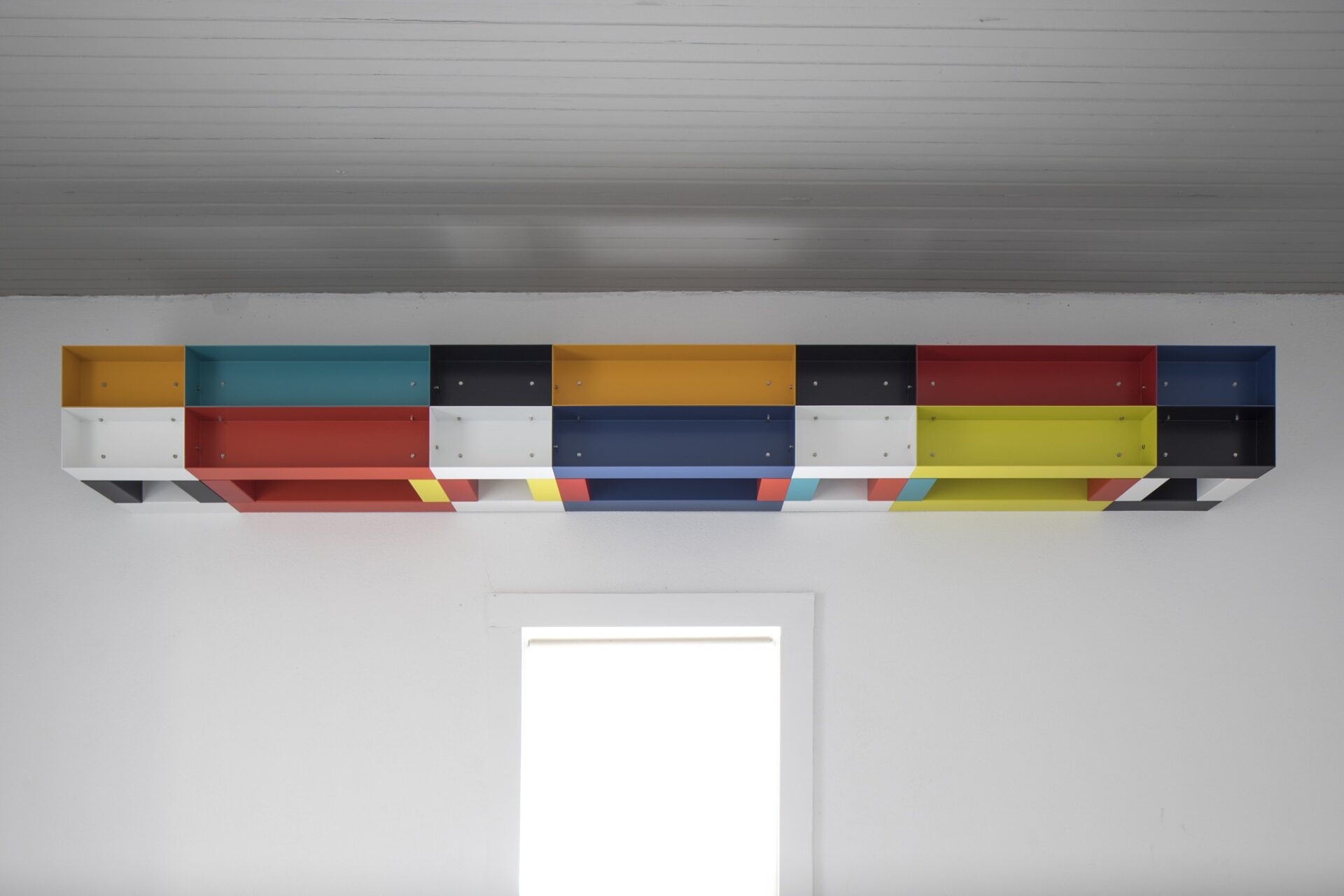Donald Judd’s painted aluminum works are made of thin sheets of metal bent into a shallow box or “pan,” which were powder coated and enameled using colors from the RAL European Industrial color system. The works are composed of individual units 15 centimeters high, 7.5 centimeters deep, and 30, 60, or 90 centimeters in width. Judd created relationships of colors based on properties such as saturation and value. In a list from February 11, 1984, he noted some of these possible combinations, such as, “All colors, same value / All values, same color / Sharp colors, possible values / Full colors, possible values,” and so on.1
Judd created a number of pieces for the wall using the same technique, including this piece, referred to as a “high” piece, installed high enough on a wall so that the primary view is from the bottom.
“In Judd’s hands,” wrote art historian William C. Agee, “color became at once surface, volume, space, material, the organizing and unifying principle, and the very essence of his work.”2

